Biology
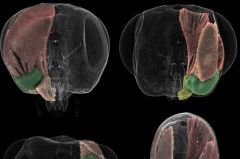
Jul 1st, 2025 - What can a tiny wasp with a rather gruesome parasitic life cycle teach us about evolution, behavior and human developmental diseases? In a new paper, researchers led by István Mikó and Holly Hoag at the University of New Hampshire (UNH) suggest that it may be a lot. The research team took a thorough three-dimensional look at four species of Nasonia wasps. The paper, on the cover of the Journal of Insect Science , describes subtle structural differences in the lower head regions ... [Read More]
Source: phys.org

Jul 1st, 2025 - Nautilus Members enjoy an ad-free experience. . I n England's Hertfordshire county, a fork-jawed nomad bee ( Nomada ruficornis ) dangles from a single blade of grass, covered in morning dew. It rests in preparation for another day of calculated trickery. Nautilus Members enjoy an ad-free experience. Nomad bees are known less for their pollination roles and more for their cunning brood-rearing habits. All nomad bees are brood parasites—also known as cuckoo bees—meaning their ... [Read More]
Source: nautil.us
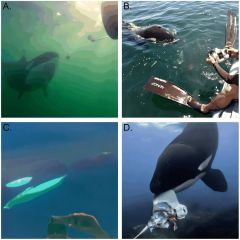
Jul 1st, 2025 - Scientists recorded 34 times orcas offered prey to humans over 20 years. Jared Towers was standing aboard a research boat off the coast of Alert Bay in British Columbia, watching a pod of killer whales feast on seabirds. Then something strange happened. A young female orca named Akela surfaced with a limp bird in her jaws. She swam directly to Towers, dropped the bird in front of him, and lingered. Her younger brother, Quiver, soon followed suit. Both whales watched. Then, they picked up the ... [Read More]
Source: zmescience.com
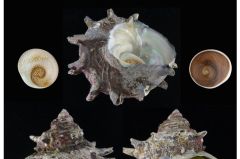
Jul 1st, 2025 - The Korea Institute of Ocean Science and Technology established, through genetic connectivity analysis, that a northward shift in the habitat of Turbo sazae, from the southern coast to the eastern coast of Korea, is closely related to rising sea temperatures caused by climate change. According to the National Comprehensive Investigation into Marine Ecosystems conducted by the Korea Marine Environment Management Corporation, T. sazae, which had primarily inhabited the southern coast of Korea, ... [Read More]
Source: phys.org

Jun 30th, 2025 - After public on-site voting, Shedd Aquarium's newest otter will now go by the name Jade. The name received 554 votes among a total of 2,000 votes that were cast in-person at the aquarium on Wednesday. Jade is a 3-year-old female non-releasable rescued southern sea otter who joins Shedd from the West Coast. The name was selected in honor from Jade's Cove, an area just south of Monterey in the otter's native range off the coast of California. Other naming options included Marina, for the city she ... [Read More]
Source: chicago.suntimes.com
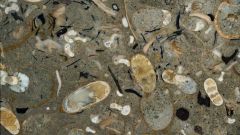
Jun 30th, 2025 - A new, advanced technique for studying fossils has revealed that squids evolved more than 50 million years earlier than previously thought and dominated Earth's ancient seas. Cephalopods – the group which includes squids and octopuses – first emerged about 500 million years ago (mya). Very little is known about the evolution of cephalopods over their half-a-billion-year history because soft-bodied animals rarely fossilise. Today, squids are the most diverse and widely distributed ... [Read More]
Source: cosmosmagazine.com

Jun 30th, 2025 - These starfish relatives have lots of remarkable features and are a keystone species. My hope is that we will recognise how vital these charismatic creatures are B rittle stars have a lot of remarkable features as a species. Many of them are bioluminescent and can flash blue light; some will have patterns and do displays. These slender relatives of starfish can be very beautiful to look at and come in a range of colours – in the tropics, for example, they can be red, black or orange. And ... [Read More]
Source: theguardian.com
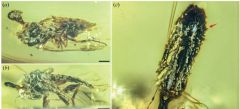
Jun 30th, 2025 - The zombie fungus from the age of the dinosaurs. Long before humans walked the Earth, while dinosaurs were still roaming the land, a parasitic fungus hijacked the mind of a young ant. Insidiously, the fungus orchestrated the ant's demise. The ant never knew what hit it. But 99 million years later, we do. In two pieces of Cretaceous amber from northern Myanmar, scientists have discovered the oldest direct evidence of parasitic fungi infecting insect hosts. One gruesome fossil preserves a young ... [Read More]
Source: zmescience.com

Jun 30th, 2025 - When you look at a forest, the variety of trees you see above ground is only part of the story. Beneath the soil, vast networks of fungi influence which trees thrive, which coexist, and how forests respond to the challenges of climate and geography. A new study led by researchers from Purdue University and Peking University has revealed how these underground fungal allies shape tree diversity across the globe. Their influence varies depending on latitude, moisture, and environmental stress. ... [Read More]
Source: earth.com
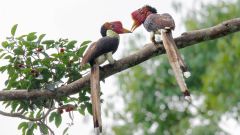
Jun 30th, 2025 - Researchers analysed different threat factors such as habitat loss and climate change to find that 500 bird species could go extinct in the next century. Unique species are most at risk. This would be a level of extinction 3 times higher than the previous 500 years of bird extinctions . The study, published in the Nature Ecology & Evolution , warns that the loss of unique birds could harm ecosystems around the world. Vulnerable birds include the bare-necked umbrellabird found in the forests of ... [Read More]
Source: cosmosmagazine.com

Jun 30th, 2025 - The cold truth about shark attacks and why you're safer than you think. At the same time Jaws fans around the world were celebrating the movie's 50 th anniversary, three young girls were trying to recover from shark wounds they endured in the past week. Two occurred at Hilton Head Island in South Carolina, with another in Boca Grande, Florida. The Hilton Head injuries were encountered in waist-deep water, while the Boca Grande bite occurred while a nine-year-old girl was snorkeling. None were ... [Read More]
Source: zmescience.com
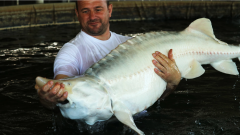
Jun 29th, 2025 - By Mikola Kopanetskyi waded waist high in an outdoor water tank the size of an above-ground pool, slowly creeping up on the beluga sturgeon swimming in front of him. Once he sneaked close enough, Kopanetskyi clamped a hand over the fish's long snout, and the battle was on. The finned behemoth began to thrash, but Kopanetskyi held firm, shushing it softly in Russian. Once the sturgeon started to tire, the burly fish farmer looped an arm under its stomach, grinning as he hoisted the 100-pound ... [Read More]
Source: miamiherald.com

Jun 28th, 2025 - We used to think leopard seals had broad diets, but new research suggests that many individuals are picky eaters – with big consequences. While the species as a whole eats many prey types, individual seals often specialize. This pattern has ecosystem-wide effects, especially in the predator-rich waters off Cape Shirreff. Leopard seals prefer specific diets The research team analyzed stable isotope values (δ15N and δ13C) from 46 whiskers of 34 seals. This long-term data covered ... [Read More]
Source: earth.com

Jun 28th, 2025 - , Phys.org Yale University ecologists reveal a lizard lineage that rode out the dinosaur-killing asteroid event with unexpected evolutionary survival traits. Night lizards (family Xantusiidae) survived the Cretaceous–Paleogene (K-Pg) mass extinction event 66 million years ago (formerly known as the K-T extinction) despite having small broods and occupying limited ranges, a departure from the theory of how other species are thought to have persisted in the aftermath of the event. Before ... [Read More]
Source: phys.org

Jun 28th, 2025 - Climate, geology, and biology together gave rise to one of Earth's most dramatic turning points: the Cambrian explosion. About 530 million years ago, most of the basic body plans of organisms that have survived until now emerged. Yet a new study argues that key elements of this revolutionary event actually took shape earlier – perhaps ten-plus million years before the formal start of the Cambrian Period. The research relies not on bones or shells, but on trace fossils – the tracks, ... [Read More]
Source: earth.com

Jun 27th, 2025 - Road ecology, the scientific study of how road networks impact ecosystems, presents a perfect opportunity for community science projects. We saw it happening, my then-girlfriend and I: The little bird suddenly flew out of the bushes by the roadside, darted low across the tarmac, and then disappeared into the right rear wheel of the car in front of us. It was centrifuged for a few revolutions before it was ejected sideways and landed, flapping in an uncoordinated fashion, in the verge. I quickly ... [Read More]
Source: zmescience.com